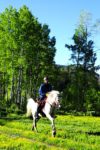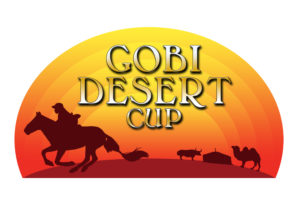Such is life: not all goals are always met, there are set backs, disappointments among the happy and bright days. At the Global Endurance Training Center we have experienced the ups and downs of competition, we understand success and failure and the emotions that come with it.
Double Zell at Moab Canyon ride, Vetcheck Day 2
As the 2010 endurance riding season comes to an end, time to reflect and take inventory. What went well, what went wrong, were the set goals realistic and were they achieved? What improvements can we all make for the new riding season?
GETC has been conducting endurance clinics now for almost 10 years. We have helped beginning endurance riders finish their first endurance ride and we have coached intermediate and advanced riders so they can better themselves and excel.
Our clinic topics include horsemanship, training and conditioning of horses, dressage and cross training, equestrian seat improvement and balanced riding, tactics, pacing and gait changes on the trail, conformation analysis, saddle fit and tack selection, newest research findings on nutrition, supplements and electrolytes, hoof care and hoof protection, just to name a few of the topics we are covering.
GE Trinity awaiting conformation evaluation
Now is the time to plan the new riding season. What’s required?
-Goal
-Intent
-Determination
-Focus
-Discipline
-Evaluation
The goal has to be realistic and achievable. Unreasonable high expectations are demotivators, they set you up for failure.
The intent has to be clear. There should be no doubt in your mind that the goal will be achieved.
You need determination, follow a straight line in your execution, no wavering.
Focus on the task at hand at any given time. Don’t allow unimportant issues or problems that you cannot solve in this instant anyway to distract you.
Instill in yourself the discipline necessary. Success requires sacrifices of one kind or another. There are no shortcuts, there is no free lunch.
And finally, stand back periodically and evaluate your progresss and the direction you are going.
To achieve this, mentors and coaches are required and an absolut necessity. Without a coach, without instruction and lessons, without that objective pair of eyes, we all too easily can err and veer off our road to success.
A huge factor in success is the horse/rider partnership. The foundation for the partnership is the love for movement, love for the sport and love for the competition. Without it, we are standing on hollow ground.
To build upon that solid ground, we need a clear picture in our mind about the desired outcome. Whether that is a simple side step in the arena, a collection exercise, a cavaletti or log jump, a creek crossing, a lead change while cantering, whatever, first we have to know what we want, the goal, then the intent, determination and focus to accomplish the task. There must never be any doubt in our mind about the desired outcome and that we are going to succeed with our task.
Horses will then, and only then,trust us, follow us, work with us in partnership.
In the 1920ies there was a famous horse, named Hans, who could solve the most difficult math problems, divisions, multiplications, roots you name it, Hans never failed. He pawed the exact answers every time. He was so famous that he travelled the world, performing at shows and circus.
Doubters questioned his smartness, accused the owner of giving Hans cues for stopping the pawing when the correct answer was met. They were given their chance, standing stiff like a rock when asking Hans mathematical questions. Hans knew math, no doubt.
Then someone suggested to have a child give Hans a math problem. Hans failed and kept on striking the ground with his hoof even after the correct number had come up and passed. What happened?
The child did not know the answer.
Hans had no math skills, he could not even add one and one. But he was a keen observer and extremely good at reading body language. Even the doubters, standing motionless and stiff, who wanted to prove him wrong, gave cues, imperceptible for humans to see, but noticeable to Hans when the proper number was met and the math problem solved.
What does that story tell us?
Body language is the result of our thoughts. Horses can read our body language, therefore they can read our thoughts and respond to them accordingly.
That’s why the clear intent in our mind when riding is of utmost importance. We can achieve more with our horses and achieve it faster when we know what we want and follow through with it.
Next time you are working with your horse, remember Hans. Ride with intent. If it doesn’t work right away, try again and again and again. Whatever it takes. Never give up. Then your training will have great results.
Riding with intent: GETC staff with clinic participants
Photo credit: Mary Kenez
Christoph Schork
Global Endurance Training Center



What a great story and a powerful point behind it. I do get quite distracted in my riding sometimes, and this is a good reminder to focus!
keep up the great work that you do 🙂 xoxo
WOW that was a great story and something i would love to do! Really inspirational, thanks guys.